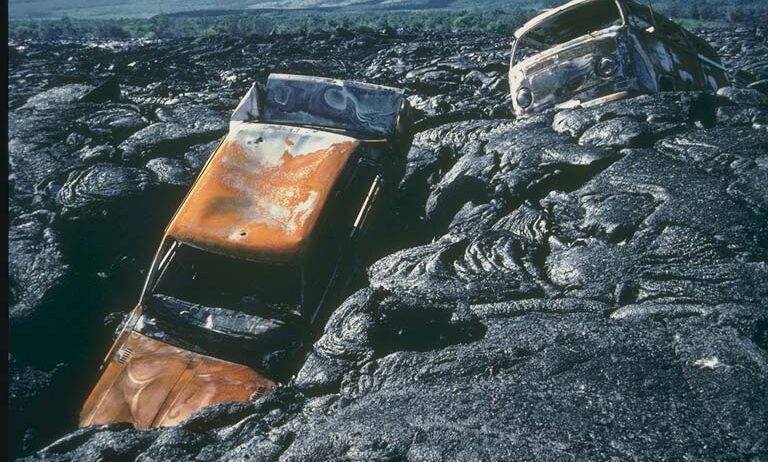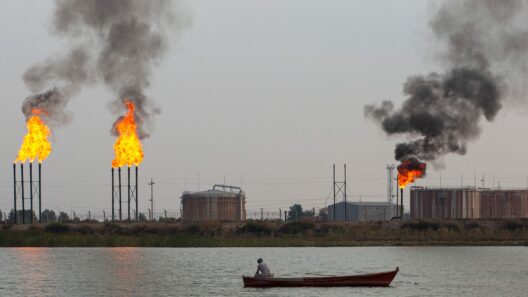Volcanic eruptions are among the most powerful natural phenomena on Earth, capable of dramatically altering landscapes and climate. The ash produced during an eruption has profound effects not only on the environment but also on the climate system, often leading to significant and sometimes unexpected consequences. Understanding these impacts is crucial for assessing both immediate challenges and long-term climatic shifts.
In this article, we will explore how volcanic eruptions influence climate, focusing primarily on the effects of ash clouds and the released gases, and the broader implications for global temperature and weather patterns.
Understanding Volcanic Ash and Its Composition
Volcanic ash is composed of tiny fragments of rock, mineral, and volcanic glass that are ejected during an eruption. This particulate matter can be rich in silicates, and its composition may vary significantly depending on the type of volcanic activity and the magma’s properties. When a volcano erupts, it releases enormous quantities of ash into the atmosphere, where it can remain suspended for days, weeks, or even longer.
As volcanic ash blankets the surrounding landscape, its immediate effects are predominantly physical: disruption of air travel, damage to infrastructure, and deterioration of air quality. However, the implications of ash extend far beyond local environments, with potential to engender noticeable shifts in climatic patterns.
Immediate Climatic Effects of Ash
The most immediate consequence of volcanic ash involves its interaction with sunlight. When ash particles are thrust into the upper atmosphere, they can form vast, imposing clouds that float for hundreds to thousands of miles. These clouds reflect sunlight, leading to a phenomenon known as “radiative forcing.” The reflection of solar radiation results in a temporary cooling effect on the Earth’s surface, as less solar energy penetrates to warm the atmosphere and ground beneath.
This cooling effect can vary in intensity and duration, depending on the volume and altitude of ash emissions. For example, the eruption of Mount Pinatubo in 1991 released an estimated 20 million tons of sulfur dioxide into the stratosphere, significantly cooling global temperatures for several years due to the resultant aerosol cloud.
Long-Term Climatic Impacts: The Aftermath of Eruptions
While the cooling effects are often immediate, long-term climatic influences are more complex and multifaceted. Volcanic activity can alter weather patterns and climate systems over extended periods, potentially lasting from years to decades. The injection of sulfur and other particulates can lead to the formation of stratospheric aerosols. These aerosols inhibit the absorption of solar radiation, thereby prolonging cooling effects.
In addition to cooling, volcanic eruptions can also inject greenhouse gases, such as carbon dioxide and methane, into the atmosphere. Over time, the balance between cooling aerosols and warming gases can shift, leading to subsequent warming as the aerosol cloud disperses. The interplay of these factors highlights the volatility of climate responses to volcanic eruptions and underscores the intricate interdependencies within the Earth’s climatic system.
Secondary Effects on Weather Patterns
Volcanic eruptions may also influence regional weather patterns. Changes in temperature and atmospheric circulation can lead to altered precipitation patterns, potentially causing droughts in some areas while precipitating excessive rainfall in others. This multifunctional impact can pose significant challenges for agriculture, fresh water availability, and biodiversity, often compounding existing environmental stresses.
A noteworthy example is the 1783 Laki eruption in Iceland, which resulted in a dramatic alteration of weather across Europe. The influx of ash and gases into the atmosphere contributed to a series of extreme weather events, including prolonged drought and unusually cold conditions, epitomizing how volcanic eruptions can ripple through climatic systems far from their source.
Volcanic Eruptions and Climate Change
In the context of ongoing climate change, it is critical to examine how volcanic eruptions fit within the broader narrative of global warming. While volcanic eruptions can produce short-term cooling effects, they may also challenge long-term climate stability. The gases released during eruptions contribute to the greenhouse effect, and as the Earth continues to warm, the potential for extreme volcanic activity may increase.
In some cases, research suggests that climate change can induce volcanic eruptions by affecting magma movement and subterranean pressures. This cyclical relationship complicates our understanding of both climate dynamics and the potential for future eruptions. It raises questions about the resilience of ecosystems and societies in an era where anthropogenic influences are already challenging climatic stability.
Mitigating the Impacts of Volcanic Eruptions
Given the profound impacts volcanic eruptions can have on climate, it is paramount that we develop effective mitigation strategies. Communities located near active volcanoes should prioritize monitoring and early warning systems to prepare for potential eruptions. Moreover, creating comprehensive climate adaptation plans can help vulnerable regions better cope with the short- and long-term impacts of volcanic activity.
Climate scientists and researchers must continue to enhance our understanding of the relationship between volcanic eruptions and climate. By studying historical eruptions and utilizing advanced climate models, we can glean insights that will guide us in anticipating and mitigating future climatic disturbances.
Conclusion: The Interconnectedness of Earth Systems
Volcanic eruptions serve as a stark reminder of the intricate interconnectivity of Earth’s systems. While they can have immediate, detrimental effects, their long-term implications on climate underscore the complexity of atmospheric interactions. As we face the realities of climate change, acknowledging the role of natural phenomena like volcanic eruptions becomes increasingly essential. By understanding these dynamics, we foster a better grasp of the challenges ahead and fortify our resilience amid the unpredictable nature of our planet.







